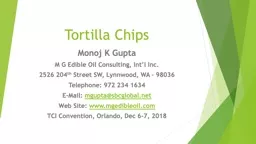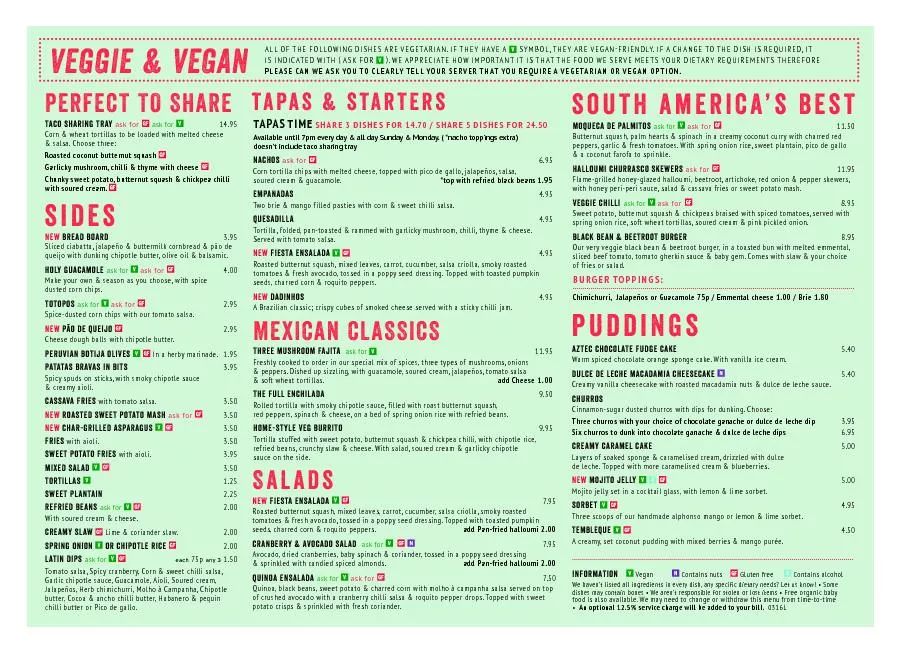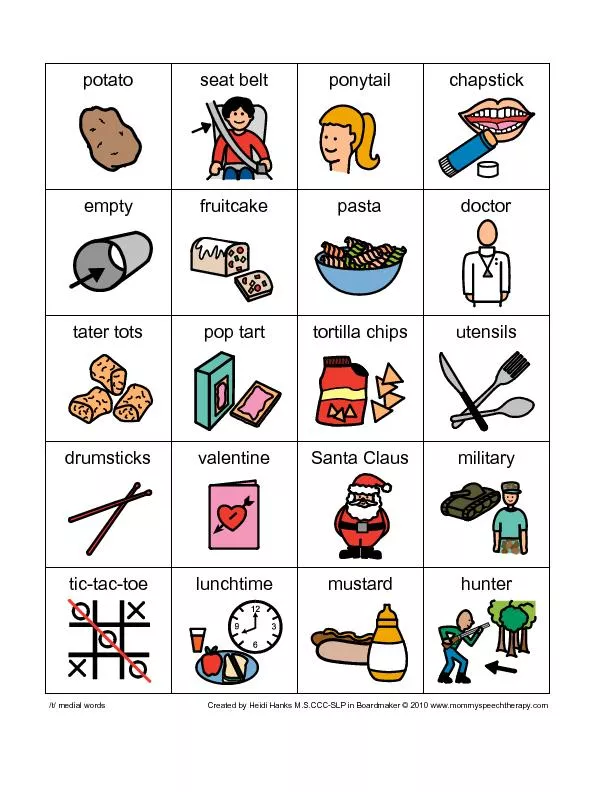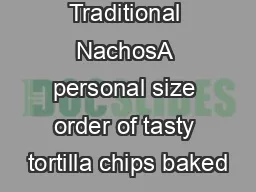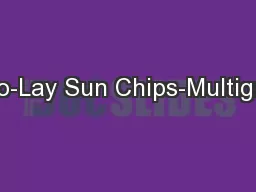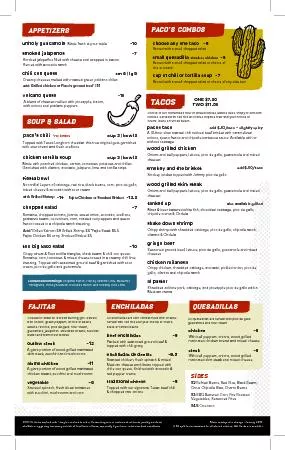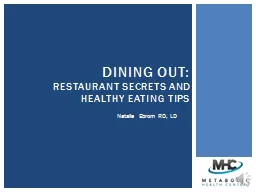PPT-Tortilla Chips Monoj
Author : celsa-spraggs | Published Date : 2019-12-07
Tortilla Chips Monoj K Gupta M G Edible Oil Consulting Intl Inc 2526 204 th Street SW Lynnwood WA 98036 Telephone 972 234 1634 EMail mguptasbcglobalnet Web Site
Presentation Embed Code
Download Presentation
Download Presentation The PPT/PDF document "Tortilla Chips Monoj" is the property of its rightful owner. Permission is granted to download and print the materials on this website for personal, non-commercial use only, and to display it on your personal computer provided you do not modify the materials and that you retain all copyright notices contained in the materials. By downloading content from our website, you accept the terms of this agreement.
Tortilla Chips Monoj: Transcript
Download Rules Of Document
"Tortilla Chips Monoj"The content belongs to its owner. You may download and print it for personal use, without modification, and keep all copyright notices. By downloading, you agree to these terms.
Related Documents

